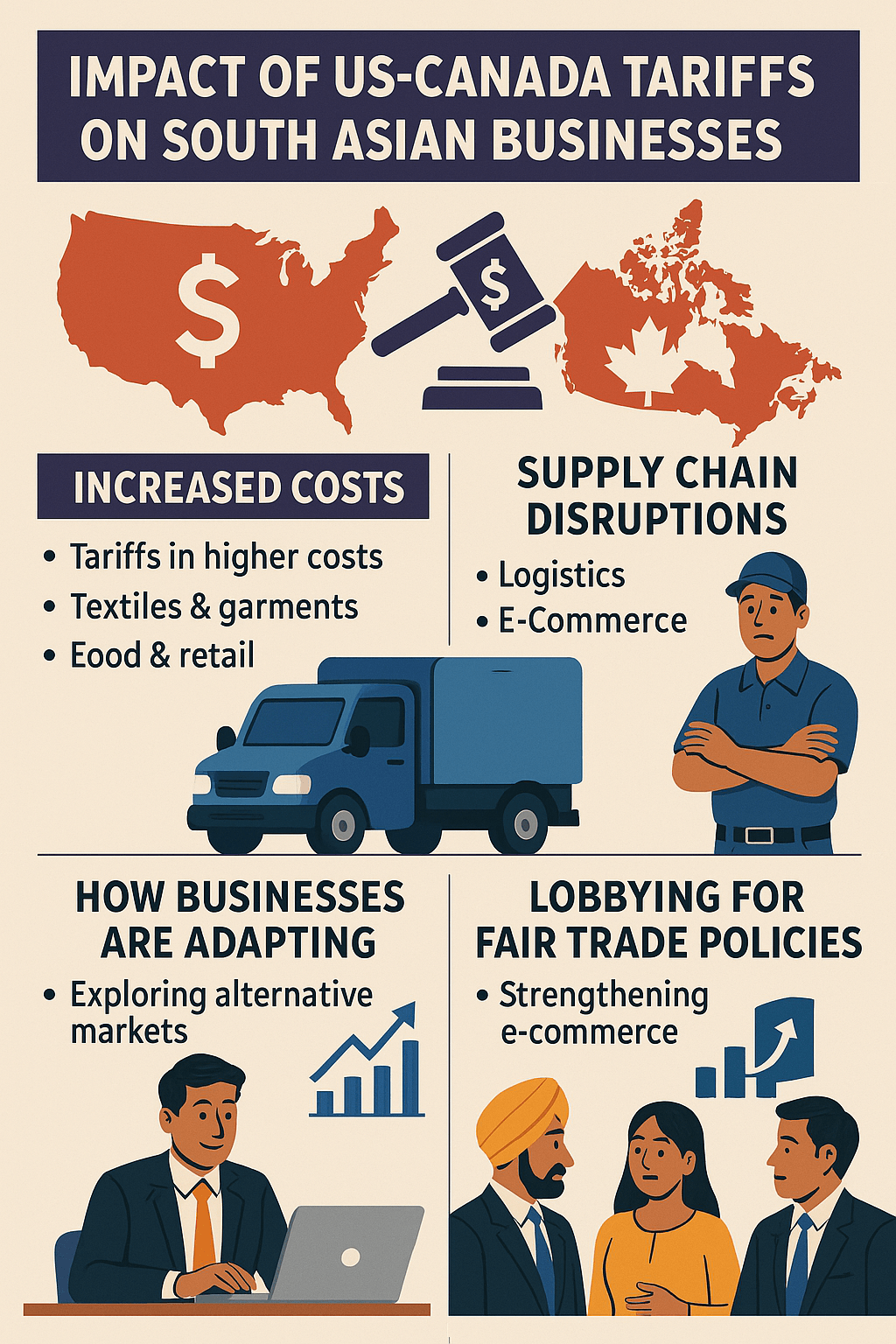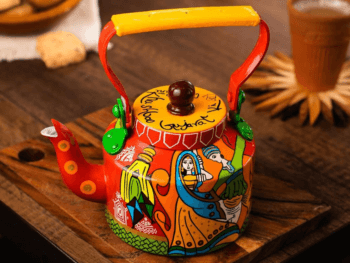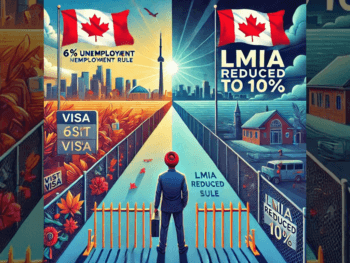
Caught In The Crossfire: How South Asian Canadian Businesses Are Tackling Tariff Challenges
Business Apr 14, 2025
The recent and significant tariff tensions between the United States and Canada have sent shockwaves across various industries, impacting businesses of all sizes. Among those significantly affected are South Asian-owned businesses, which are crucial to the North American economic landscape. Whether operating in retail, manufacturing, logistics, or technology, these businesses face increased costs, disrupted supply chains, and shifting consumer demand due to the weighty impact of fluctuating trade policies. Impact of US-Canada Tariffs
This article examines how South Asian entrepreneurs navigate economic challenges and their strategies to sustain their businesses amid tariff hikes.
The Growing Influence of South Asian-Owned Businesses in North America
The South Asian business community is significant in Canada and the United States. According to a 2021 report by Statistics Canada, over 250,000 businesses in Canada are owned by South Asian immigrants, contributing billions of dollars to the economy. In the United States, Indian and Pakistani entrepreneurs own more than 10% of all small businesses in major metropolitan areas, including New York, Chicago, and Los Angeles.
Key industries dominated by South Asian entrepreneurs include:
- Textiles & Garments: Many South Asian businesses trade in imported apparel and fabrics from India, Pakistan, and Bangladesh.
- Technology & IT Services: South Asians own many IT startups and consultancy firms.
- Food & Grocery Retail: South Asian grocery chains, spice importers, and restaurant owners rely heavily on cross-border trade.
- Trucking & Logistics: A significant employment sector for South Asians, particularly in Ontario and California.
However, the US–Canada tariff tensions have disrupted these industries in multiple ways.
How Tariffs Are Affecting South Asian Businesses
- Increased Costs in the Import-Export Trade
With Canada and the US imposing new tariffs on steel, aluminum, dairy, and other products, business costs have surged.
Statistical Impact:
- In 2023, the U.S. imposed a 10% tariff on Canadian aluminum and a 25% tariff on steel, affecting thousands of small manufacturers who source raw materials from Canada.
- The Canadian government retaliated with equivalent tariffs, increasing the costs for businesses importing American products.
Example: Many South Asian garment businesses in Toronto and Vancouver import textiles from South Asia but rely on US-based textile manufacturers for finishing processes. According to a report from the Canadian Apparel Federation, increased tariffs on raw materials have raised production costs by nearly 20%.
- Supply Chain Disruptions in Logistics & Transportation
Increased tariffs and border delays have severely affected the trucking industry, which employs many South Asians.
Example: Punjabi-owned trucking companies in Ontario, which transport goods between Canada and the US, are struggling with higher fuel costs and border delays, resulting in increased delivery times and reduced profit margins.
Statistical Impact:
- The Canada-U.S. trucking industry handles over $700 billion in trade annually, and even minor tariff changes can increase operational costs by 5-10%.
- South Asian trucking firms, which comprise approximately 40% of Canada’s trucking workforce, face tighter profit margins due to higher customs fees and duties on imported vehicles.
- Food & Retail Sector Challenges
South Asian grocery store chains and restaurants heavily rely on imported spices, dairy, and packaged goods from the US and South Asia. Tariffs on processed food products and supply chain disruptions have driven up costs.
Example: A Pakistani grocery store chain in Brampton reported that, due to tariff changes, the cost of importing rice and lentils from the US increased by 15% in the last quarter, forcing them to raise prices, reducing customer sales.

Statistical Impact:
- The Canadian food and beverage industry imports nearly $6 billion of products from the U.S. annually. Any tariff hikes directly impact small business owners.
- Due to retaliatory tariffs on dairy products, South Asian restaurant owners are paying 10-20% more for imported spices and dairy products.
- Challenges for E-Commerce & Digital Entrepreneurs
With rising costs in supply chain logistics, South Asian entrepreneurs in e-commerce and digital retail face increased shipping expenses and customs duties.
Example: A Toronto-based Indian entrepreneur selling South Asian jewelry online has faced higher shipping costs for US-based customers, reducing their competitive advantage.
How South Asian Businesses Are Adapting to the Tariff Crisis
Despite these challenges, South Asian entrepreneurs impressively innovate and adapt by implementing various strategies.
- Exploring Alternative Supply Chains
- Many businesses are sourcing products from Mexico or South America to avoid US- Canada tariffs.
- Some textile and clothing companies are relocating to Vietnam and Indonesia, offering lower tariff rates than China and the US.
Example: A South Asian textile company in Mississauga has shifted 40% of its imports from the US to India and Mexico, avoiding heavy tariffs on cotton fabrics.
- Strengthening Digital & E-Commerce Sales
- Entrepreneurs are shifting to direct-to-consumer (DTC) models, using platforms like Shopify, Amazon, and Etsy to reduce reliance on US-based wholesalers.
- Using drop-shipping methods from Asian suppliers to cut warehousing costs.
Example: A Punjabi-owned fashion retailer in Vancouver began selling directly from an Indian warehouse to Canadian customers via e-commerce by passing US tariffs altogether.
- Lobbying & Policy Advocacy
- South Asian business associations are lobbying government officials to negotiate better trade deals and lower tariffs.
- Organizations such as the Canada-India Business Council (CIBC) and the Indo-Canada Chamber of Commerce (ICCC) advocate for trade agreements that reduce tariff barriers for South Asian entrepreneurs.
- Expanding Beyond US & Canadian Markets
- Many businesses now target European, Middle Eastern, and Australian markets with lower tariffs.
- More South Asian businesses are partnering with local distributors in new markets to expand their international presence.
Example: A Toronto-based South Asian spice brand now exports directly to Dubai and London, diversifying its revenue streams beyond North America.
Resilience in the Face of Trade Challenges
The US–Canada tariff war has undoubtedly posed significant challenges for South Asian-owned businesses, increasing costs and disrupting their supply chains. However, the adaptability and entrepreneurial spirit of the South Asian business community are not just helping them navigate these hurdles but also inspiring others. Through supply chain diversification, digital expansion, and policy advocacy, they are proving their resilience in the face of trade challenges. Impact of US-Canada Tariffs
By leveraging alternative trade routes, e-commerce platforms, and global partnerships, South Asian entrepreneurs in North America are proactively positioning themselves for long-term success despite the trade uncertainties ahead.
Key Takeaways
✅ Tariffs have raised costs for South Asian businesses in textiles, logistics, food, and e-commerce.
✅ South Asian trucking and logistics companies face higher operational expenses.
✅ Entrepreneurs are adapting by sourcing from alternative markets and increasing direct-to-consumer sales.
✅ South Asian business groups lobby for fair trade policies to reduce tariff burdens.
As trade policies evolve, South Asian businesses in North America must remain flexible, proactive, and globally focused to thrive in the changing economic landscape.
Author
Internationally celebrated, award-winning media personality and author of several business and lifestyle articles, Tushar Unadkat, is the CEO, Creative Director of MUKTA Advertising, Founder, and Executive Director of Nouveau iDEA, Canada. He holds a Master of Design from the University of Dundee, S...













































































































